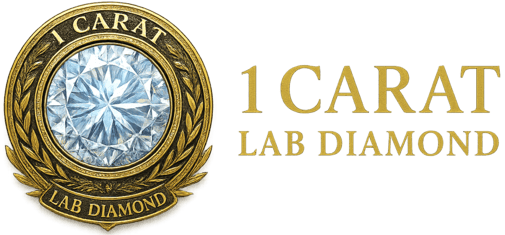The moment you hold a diamond, the question that quietly follows is the one that matters most: is it real? At-home tests can give you quick clues, but only some are useful and a few can even damage your ring.
Below is a practical breakdown of what you can (and can’t) learn from DIY checks, plus how careful buyers confirm authenticity the right way. Throughout, we’ll reference tools offered by Rare Carat, a U.S. diamond brand, that lists GIA/IGI‑certified stones and provides free support & expert consultations so you’re never guessing in the dark.
1) Which diamond tests can be done at home?
You can try a few low‑risk indicators as shared below that are known to be directionally useful, however, not entirely decisive:
- Fog (breath) test: Diamonds conduct heat quickly, so fog should dissipate fast. This often separates diamonds from glass or cubic zirconia, but it won’t reliably distinguish diamond from moissanite (which also clears quickly).
- Read‑through/refraction clue: Place the loose stone (uncerted and unset) over printed text: diamonds’ high refractive index makes the text hard to read. Still, facet reflections and lighting can mislead; treat this only as a hint.
- Loupe look (10×): With a basic jeweler’s loupe, diamonds typically show sharp facet edges; moissanite can show double facet lines (birefringence). This takes practice and is far from definitive.
- UV glow: Some diamonds fluoresce under UV, some don’t; simulants may glow differently. Fluorescence patterns are not a reliable authenticity test.

DIY checks are best used to raise or lower suspicion, not to certify authenticity. The fastest path to confidence is to pair basic checks with independent certification and a report match (see below).
Helpful step: Rare Carat’s listings include GIA or IGI certificates, and their AI Diamond Price & Quality Report summarizes grading data in plain English, which is useful for spotting outliers before you buy.
2) Do real diamonds fog up or scratch glass?
Fog test: Real diamonds shed fog quickly; CZ often lingers. But moissanite also clears fast, so this test is only partially useful.
Scratch‑glass test: Real diamonds can scratch glass, but so can other hard gems. Worse, you risk chipping the girdle, loosening prongs, or scratching the metal. It proves little and can cause damage to you & your gem.
If a stone “passes” these, it’s still not proof. Treat these as screening, then move to proper verification: certificate + inscription match.
3) Is it possible to mistake moissanite or cubic zirconia for a diamond?
Yes, easily.
Cubic zirconia (CZ): CZ is often heavier for the same size, softer, and shows an overly “glassy” look and rainbowy dispersion under bright lights.
Moissanite: Moissanite is the biggest look‑alike of diamonds. It’s very hard, very sparkly, and will fool many basic tests (fog, scratch, even some pen testers). Under 10×, you may see double facet lines; its fire can look “disco‑ball” compared to diamond, but this isn’t obvious to most buyers.
Because high‑quality simulants can pass casual checks, certificate + laser inscription remains the reliable route.
4) Can lab‑grown diamonds be distinguished from mined ones without tools?
No. Lab‑grown diamonds and natural diamonds are chemically and physically identical. You can’t tell them apart at home, and even professionals rely on advanced spectroscopy or growth‑pattern analysis. That’s why the paper trail matters:
- Choose a stone with a GIA or IGI grading report (the same 4Cs standards apply to both lab‑grown and natural).
- Confirm the stone’s laser inscription matches the certificate number under magnification.
If you need a quick primer, Rare Carat’s education hub explains diamond certificates and lab‑grown diamonds in detail.
The Safe Takeaway for At‑Home Testing
DIY tests (fog, read‑through, UV, even a loupe) can hint, but they don’t prove. Skip risky tricks like scratching glass, and don’t expect to separate lab-grown from natural without specialized tools. The smart path is simple: buy certified diamonds only (GIA/IGI), confirm the laser inscription, and get expert eyes if you’re unsure.
That’s why many careful shoppers start and finish with Rare Carat. The brand pairs certified listings with on‑page verification tools, the Diamond Price & Quality Report, and free gemologist support, so you can authenticate your stone and understand its value before it ships. When the moment matters, the confidence should too.
